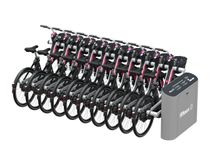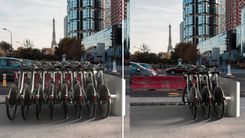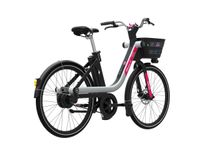Traditional docking infrastructure for bikes can be expensive to implement - it can also mean intrusive roadworks. Above all, it takes up a lot of space, especially when there are no bikes at the station.
Virtual stations are a solution to the problem, but they aren’t secure like traditional docks are, which can lead to vandalism and costly repairs, not to mention disorderly bikes (making your city look untidy).
We’ve engineered ultra-lightweight docking infrastructure that keeps bikes safe and secure, but also to optimise the use of public space.
And it’s tried and tested in cities across France.
Smart station
This smart station is the most compact charging station in active use. Weighing in at 60kg, it is heavy enough to withstand significant external force, but also light enough to remain portable.
This is especially useful for the launch of a new system - because user mobility patterns will not always gravitate to where you imagine your future mobility hubs to be.





